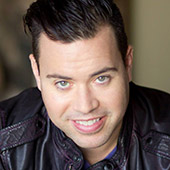11 Ways Remarkable Storytellers Create Reality Distortion Fields
How to sell your ideas, products, and vision like Elon Musk and Steve Jobs.
Shared: From your friends TechAutoCareers.com® the online resource for the Automotive Sales Consultant
I can't get this idea out of my head...
If something catastrophic happens to the Earth, we lose billions of years of evolution and thousands of years of advanced human civilization. Colonizing Mars isn't just something we can do, it is something we should do.
Seven years ago, I couldn't have imagined myself saying those words. I'm not a space geek. I'm not obsessed with science.
But a handful of minutes listening to Elon Musk's story and vision at the Inc. 500 conference in 2008 changed all of that.
Elon Musk and Steve Jobs are each known for their seemingly mystical power to distort reality. What gives them this ability isn't just a quirk of a charismatic leader: it's a learnable skill called storytelling.
The better at storytelling someone is, the more that readers and listeners are transported into a whole new world. According tostudies conducted on this transportation phenomenon, great stories alter beliefs, result in the loss of access to real-world facts, evoke emotions, and significantly reduce ability to detect inaccuracies. To understand this phenomenon, you don't need to look any further than your own personal experience desperately rooting for an immortal, time-traveling mutant in X-Men or another equally impossible character and plot from your favorite movie.
To understand how to develop this storytelling super-power and use it for good, I interviewed 11 top online storytellers who collectively generate hundreds of millions of pageviews every month and asked them to share the secrets of how they craft stories...
1. Balance The Universal With The Specific

Michael Margolis, Founder and CEO of Get Storied
When I first started using social media in 2009, I was in the midst of a divorce, and my business had been pulled into the divorce. I was basically $100,000 in debt and on the verge of personal bankruptcy.
Sharing my life stories on social media was like therapy, only cheaper. The unreconciled part of your story is your greatest source of untapped power. What I learned is that one of the keys to social media is balancing the universality of your experience with the specifics that are your own. I do this by:
Tapping Into Universal Themes. I ask myself, "How do I increase the likelihood that people are going to identify with my story?" The idea that your journey is unique is actually a false construct of our own ego's need to differentiate. Research shows that if we empathize with the characters in a story, we are more likely to accept a story's main message (e.g., being an organ donor or dealing with cancer better).
Being Specific. While we share similar themes as we journey through life, it's the details that set us apart and make us unique. It's essential to share those specifics. When you get into the specifics, what you're actually doing is you're transporting people into that world. It's like, "Oh, I'm traveling through time and space into that moment with you, because you've given me enough specifics to color the experience." These are what any good movie or book does. Two decades of academic research have affirmed the power that a detailed narrative has on readers.
2. Be Unapologetically Authentic

Jordan Harbinger, cofounder of The Art of Charm, iTunes top 50 podcast
I am all about unapologetic authenticity. I don't mean it like, "This is what I am saying because I don't give a f***." I think that's kind of self-serving. I mean it like, "This is what I truly feel, and I'd like to share it in a way you can relate to."
The difference is going from "I learned not to hire my friends because when I did my business failed." to, "Yeah, I hired my friends, and it's the most painful thing I've ever done, and here's why. They stole from me, and they made me feel bad about myself."
The second type of story is more relatable because many people have experienced it for themselves. No one has the story, "This bad thing happened to me, but I am great now!" That's the story people have when they either haven't dealt with it, or they're lying about it, and they want to spit-polish their personal brand. Even the most successful people in the world constantly face huge challenges behind-the-scenes.
Being unapologetically authentic means asking yourself, "What's something that people wouldn't necessarily expect to learn from someone like me?" and sharing the following parts of your story:
- The mistake I made and its repercussions.
- My raw and mixed feelings I had about it.
- What I learned or would do differently if I had another chance.
- The positives that came from the lesson.
If you want to listen to examples of unabashedly genuine storytelling, listen to the THE MOTH Podcast.
3. Test Your Story Until It's A Wow Every Time

Emerson Spartz, founder & CEO ofSpartz Inc.
The first iteration of the pitch you use to sell your idea, product or company is usually garbage. Borrowing the lean startup methodology from the tech world, it's key to get real world feedback on that story as fast as possible and then keep making improvements. If you do this, it will rapidly get better and better. If you don't, you will waste valuable time promoting an ineffective story and lose windows of opportunity.
Eventually, after dozens of iterations, you'll get a WOW every time. I've used this approach every time I've raised capital, and we've raised $9.5 million so far. The difference between going with my first story and my WOW story has been remarkable.
I recommend first testing your pitch on your friends and familywho are the closest to your target audience--tell them the story, watch their reactions, and ask for feedback. When I've finished a story, I ask "What parts resonated with you the most? What didn't resonate as much?" Asked this way, it's safe for them to give you the critical feedback they otherwise might have been afraid to share. You'll see patterns emerge as people mention the same parts over and over. This feedback tells you which parts to expand on, cut, or further develop.
Professional comedians understand that going with your first story is the equivalent of a comedian doing a prime-time special after only one or two shows. In reality, star comedians like Amy Schumer, Kevin Hart, and Jerry Seinfeld do hundreds of small, underground shows to test their material. Once their material is ready, they perform to sold out venues globally. If the top storytellers in the world follow this process, that's a clue that you should too.
4. Do A Double Punch With Visual Stories

Nadine Hanafi, Founder and CEO of We Are Visual
As much as we like to think of ourselves as rational creatures, we are not. If we were, no one would throw away their perfectly working iPhone 5s to go pick up the latest Apple toy. We largely make decisions based on emotions, then rationalize them later with logical arguments.
So how can you incorporate emotion into your facts and data? Use a visual story.
Imagine I am asking you to make a donation to a charity that builds water wells in the developing world. I may tell you that 750 million people don't have access to clean water today. That number is just another faceless statistic that you will probably forget tomorrow.
However, if I show you a picture of a little boy drinking out of a puddle of what looks like sewage water and add the caption, "1 in 7 people don't have access to clean water," suddenly, it has a lot more emotional weight. It has a face.
Now I add a story. "This is James, he is 6 years old and he lives with his mother and 7 siblings. His mother walks 20 miles every day to fetch drinking water from the nearest well. Sometimes the well is dry and James gets thirsty so he drinks from nearby puddles without realizing how dangerous it could be for him. There are 750 million people like James."
Now this statistic is a lot more powerful because I have armed it with the persuasiveness of a visual story. It makes people FEEL the need to take action.
5. Add Uncertainty Into Your Plot

Marshall Ganz, Author of Why David Sometimes Wins, senior lecturer at Harvard University who iscredited for devisingPresident Obama's 2008 grassroots organizing model
Everywhere around the world, there are three components to a story; plot, character, and lesson learned. The big question is, "What makes a plot a plot?"
Consider two stories about the same thing:
Story #1
I got up this morning, got my car, and then came to school.
Story #2
I got up this morning and went outside. My car was gone. Instead of my car, there was one wheel on the ground. "What happened here?" I wondered.
Which one is better? If you asked 10 people, they all would give the same answer; #2.
What got you interested? The unexpected! A plot is not a plot until something unexpected happens. That's when our brain goes out of autopilot and pays attention.
As human beings, we operate with an expectation of what will happen next. For example, let's imagine that I'm driving along on autopilot and a truck pulls out. If I stay on autopilot, I am a goner. So the surveillance system in our brains detects the unexpected. My brain starts shouting, "Truck! truck! truck!" The emotion breaks through habit. Without that sort of a break, the story is uninteresting.
The surveillance system detects the anomaly and our experience of that is anxiety. The big question then is how the reader responds to the anxiety. Do they "react" with fear for which they are hardwired (fight, flight, freeze) or can they access emotional resources (hope, solidarity, self-efficacy)? Our cultures developed stories to help us access the emotional resources of the protagonist and take purposeful action.
6. Disrupt Your Industry's Fairy Tale Stories

Derek Flanzraich,founder and CEO ofGreatist
At Greatist, where we have 10M+ visitors per month, our approach to storytelling is to turn fairy tales into the authentic stories our very specific audience is aching for.
The most common type of story you'll find in the media is the fairy tale story:
I had a challenge.
I overcame it.
Things are perfect.
The problem with this is that it doesn't fit the messiness of most people's reality. Authentic stories resonate more because they hit on a specific challenge your audience is facing, which hasn't yet been told at the level of depth they desire.
For example, instead of just telling the classic before and after fairy tale (e.g., overweight person gets confidence boost by losing weight), we share the story of "Before," "After," and THEN "Ever After" with an emphasis on the latter. We talk about how most people going on diets actually feel more insecure. We talk about how they realize that what they want is confidence regardless of their weight. These body-positive stories make up one of the most popular categories on Greatist.
The more you can understand your audience's specific challenges, the more deeply your authentic story will resonate. This is exactly how we wrote an article, 31 Healthy and Portable High-Protein Snacks, that was shared 999,000+ times. This article isn't a storytelling article per se, but it does solve the story that busy mothers live daily: the struggle of finding healthy on-the-go recipes that can keep their kids engaged.
7. Come From A Place Of Stillness

Amber Rae, founder ofThe World We Want
People often look externally to create content; getting distracted and losing focus in the process. They think, "Okay, what is this person doing?" or "How do these people think about what I should do?" Really the process should be, "What do I feel at the deepest level that I want to express to the world?"
Vulnerable storytelling cuts through the noise online and connects with people at a deeply human level. Through introspection, we gain deeper self-insights, subsequently helping us to communicate more authentically.
Here's a process you can use to create content that is authentic to who you are:
- Figure out your process to help yourself get to a place of stillness: whether it's journaling, whether it's meditation, whether it's exercise, whether it's cooking, or something else altogether. Research shows that journalling is especially powerful as a tool to understand ourselves, improving our physical and mental health in the process.
- Create raw and vulnerable content that is not aimed to validate or prove yourself. When you do that, you've reached a place of comfort within yourself.
- Be clear on your "why." When using social media, be sure to ask yourself, "Why am I using this and how is it adding value to whatever it is I'm trying to create?" I'm obsessed with Instagram. I love Facebook. But I am very clear about what my intentions on these platforms: to inspire.
8. Use Open Loops To Create Anticipation

Andre Chaperon, founder ofAutoResponder Madness
Ever watched 24? Lost? Game of Thrones?
Ever wondered how they keep the attention of millions week-after-week?
Every show subtly starts multiple open loops, closes most of them by the end of the episode, and leaves at least one big open loop that the next episode resolves. An open loop is basically plot or subplot that has been started but not finished.
Nothing grabs our attention faster than the need to know what happens next.Our mind is wired to want to close these open loops.
We can all easily use open loops to tell stories even though we aren't Hollywood storytellers with big budgets. The main way I communicate with people online is through newsletter emails, which are read 3-4 times more than the average email newsletter. This is because I create open loops that intrigue people. One simple open loop I created with just a few sentences in one of my emails went:
"In 2007 I ran an evil experiment. The result of the experiment bumped my opt-in rate from 20% to 50%. I may show you the whole experiment at some point if you are interested, but I digress. The point is..."
Jesus! I got so many emails asking, "Tell me, what is this thing?"
When most people create articles, social media posts, and email newsletters, they tend to make the mistake of not connecting each post to their larger narrative. Therefore, I recommend creating the overall plot of your content upfront just like a TV show plans all of its episode. Here's the exact process I use:
- Write multiple emails at once. I'm a very visual person, so I put multiple windows across my one screen and start writing across them.
- Move story elements around. Once I have written an email out, I start moving around story elements,, and playing with them.
- Open loops. I then decide how to open and close each story element.
9. Use Quotes To Build Characters

Dorie Clark, CEO ofClark Strategic Communications, author of Stand Out
When most non-fiction writers think about storytelling, they focus on plot and ignore the importance of developing a character. Yet readers prefer stories where they can relate to the main character. Developing those characters is how they become relatable.
I've now written two books where I interviewed dozens of entrepreneurs and professionals to capture their best practices about professional reinvention (Reinventing You) and how they became recognized experts in their field (Stand Out).
The biggest thing I learned about developing characters is to let their voice shine through. The way someone speaks is incredibly distinctive, and it can tell you a lot about who they are . While you need to paraphrase at times, I love to let interesting, original quotes shine through. Bestselling author, Daniel Pink, told me about his practice of responding to every fan email personally, admitting, "On a tactical level, it's insane."
Here is the specific process I use:
- Record The Full Interview. I record their interviews (with my smartphone if we're meeting in person, or on Skype) so I don't have to rely on abridged notes I'm jotting down.
- Notice When Passion Spikes. If there's an area where they seem particularly passionate, I'll make note of it. When someone is speaking in a unique voice, you can tell it's them and not a corporate spokesperson.
- Let Great Quotes Go Long. Typically you don't want to bore readers with long block quotes from someone, but if their personality shows through, it's worth it - they get a payoff from getting to know the speaker better.
10. Find And Reverse-Engineer The Emotions Behind Great Stories

Todd Wiseman, co-founder and president of Hayden 5 Media
My boutique video production company, Hayden 5, has created viral videos with tens of millions of views, award-winning videos, and films. What I've learned is that no matter how simple or complicated a story is, you can reverse-engineer the emotions.
When we start working on a project, we always tell our clients to tell us about a story in a video that made them emotionally react in a certain way. Then we take a look at why it stood out. It usually comes back to two questions:
What's the basic emotion?
What made you feel it?
Why are emotions so important? When stories effectively trigger emotions, people:
- Remember things better. A study that analyzed the responses of 414 young adult participants found that emotional stories were 29% more remembered and recalled by the respondents than neutral stories.
- Are more empathetic and understanding.A joint analysis of speakers and listeners' brain scansdemonstrated that the listener of a story tends to be in sync with the speaker in terms of brain activity, indicating a deep sense of empathy in conversations.
A great video that triggers very raw and real emotions is Going to Visit Mum. For me, it was that relatable feeling of being missed. Here's how I would deconstruct it....
It's that scenario when you were a kid, and homesick on some trip away from "mum," or a loved one. There's something about that phone call, and something even more special about finally reuniting. In this case, the mother and son have been away from each other for so long, and when they reunite, you know it's going to be emotional. In my opinion the filmmakers here took a basic emotion that many people can immediately relate to, and amplified it. On top of that, it was real.
11. Bring Them Through An Emotional Rollercoaster

Neil Patel, founder ofQuick Sprout
I like to take people through an emotional rollercoaster. From ups and downs, to happy moments and even sad ones... you want your story to be like a rollercoaster in which people won't know what to expect next.
By taking people through different emotions they are more likely to bond with you, just like in a relationship. For example, you've bonded with your significant other or family members because you've been through a lot of emotions with them. For example, in an analysis of 108 Super Bowl ads, the dramatic plot structure (exposition, rising action, climax, falling... was the most well-received form of plot development.
Through emotional rollercoaster storytelling you can do the same thing. It not only will help capture and grab your reader's attention, but it will help you convert more readers into customers.
P. S. Urgent if you’re looking to optimize your interpersonal skills for success order a copy of " How to Succeed in the Automotive Sales Industry " @TechAutoCareers.com. Then settle in for a satisfying read that will surely enhance your interpersonal skills for success this year, it is not just a book but a service.
If there is anything thing we can answer for you please do not hesitate to get in touch with us @TechAutoCareers.com® we are looking forward to working with you - and hopefully conversing with you. Again, thanks from I.C Collins and Tammi Collins @TechAutoCareers.com® Feel free to be yourself get to know our members on Facebook, Google+, and Linkedin.
We want to take a minute and THANK all the people that comment, like, and share our posts daily. We appreciate you all @TechAutoCareers.com
What do you think? Is this something you can benefit from or do you have a few tricks up your sleeve that are just as powerful? Make your voice heard by leaving a comment below. Don’t forget to hit the share button if you know others who will find this post useful.
I.C. Collins ~ Author, Educator, Trainer and President: Has One Simple Goal: I believe it is my mission and purpose to remind you, that you are meant to have the best life possible! You were created with intention and purpose and I am here to simply help guide you through your life’s journey.
Tags:
Replies to This Discussion
© 2025 Created by DealerELITE.
Powered by
![]()